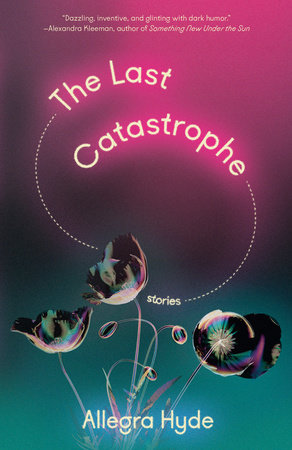The Last Catastrophe Reader’s Guide
By Allegra Hyde


1. The first story in The Last Catastrophe, “Mobilization,” ends with the line “We are ready.” What do you think the collective speaker is ready for?
2. In “Disruptions,” a series of headlines from NationalGeographic.com serve as an epigraph. All these headlines describe examples of global weirding—a term for the ways climate change is making our weather systems, ecological systems, migration patterns, and other aspects of our natural world weirder than normal. Have you witnessed or heard about other examples of global weirding?
3. For the characters in “The Tough Part,” there are many tough parts, most notably the challenge of trying to save the planet’s remaining moose from extinction. When no safe haven for the moose can be found, the challenge becomes existential: the characters must live with their own sense of futility. For many of us living through the Anthropocene, this is a common feeling. Do you think it’s the toughest part?
4. Zoos come up several times in this story collection, both directly and metaphorically. What role do you think zoos play in our society? Should they exist?
5. “Afterglow” is a story that explores how an objectively toxic presence (e.g., pollution) can also be a source of beauty (e.g., sunsets). How have you seen this paradox play out in other ways in our real world?
6. At the end of “Chevalier,” Eddy tells Camilla that when she went to New York City, everyone stared at her unicorn horn—unlike in the small town of Chevalier, where no one really cared. Do you think she’s telling the truth? What does the horn signify to the two women, if anything?
7. A logical progression for targeted marketing—at least according to “The Future Is a Click Away”—is a world in which an all-powerful Algorithm mails consumers what they need before the consumer even knows they need it. Does this story seem prescient, or still unlikely?
8. “Endangered” imagines a reality in which artists are treated like endangered animals—meaning they are caged for their own protection and preservation. Do you think artists are endangered in our real world? Are there other professions or practices we might likewise see as facing possible extinction?
9. In “Loving Homes for Lost & Broken Men,” there is a foster care system for wayward husbands. For all of its absurdity, did anything about this fictional scenario ring true?
10. In “Cougar,” animal habitats are being encroached upon by human activity around the world. One consequence of such encroachment is that apex predators—cougars, polar bears, sharks—are more likely to appear in human spaces. What’s the best way to respond? Is there a case to be made for living with danger?
11. Though there is still an opportunity for human beings to mitigate the worst impacts of climate change, it is also too late to stop many of the changes already in motion on our planet. We’re losing species to extinction, we’re losing coastlines to rising sea levels, and we’re losing aspects of our way of life, along with so much else. Part of coping with this disaster means bearing witness to this loss, rather than continually turning away. What’s something on this planet that you don’t want to lose?
12. “Democracy in America” imagines a near-future America full of speculative technological and political possibilities, but the story remains rooted in our contemporary realities, as well as in Alexis de Tocqueville’s famous nineteenth-century study, Democracy in America. In the past, present, and future, do you think the notion that in America, “if you work hard enough, paradise can be yours” holds true?
13. What kinds of adjustments do you see yourself making as climate change adjusts our world?
14. In the penultimate story, “Colonel Merryweather’s Intergalactic Finishing School for Young Ladies of Grace & Good Nature,” the character Karoline has the opportunity to choose whether to go along with her community’s plan for her—to marry Young Captain Jamison and head out into space to find a new home planet—or to resist these expectations, and perhaps even return to Earth. If you were in her position, what would you do?
15. At the end of “The Eaters,” the character Marmalade steps out of the safety of a survivalist compound and into a swarm of hungry plant-eating zombies. She feels this is the right thing to do, despite the potential risks. What do you think happens next?
Just for joining you’ll get personalized recommendations on your dashboard daily and features only for members.
Find Out More Join Now Sign In